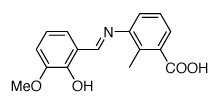TL2-C29
-
Cat.code:
inh-c29
- Documents
ABOUT
Inhibitor of TLR2 signaling
TL2-C29 is a small-molecule inhibitor of Toll-like receptor 2 (TLR2) [1]. TLR2 plays an essential role in detecting a diverse range of microbial pathogen-associated molecular patterns (PAMPs) from bacteria, fungi, parasites, and viruses [2]. TLR1 and TLR6 co-receptors are crucial for TLR2 signaling and ligand specificity. Cell surface TLR2/TLR1 and TLR2/TLR6 heterodimers bind tri- and diacylated lipoproteins, respectively [3,4]. TLR2 signaling is initiated by ligand-induced dimerization of the essential cytoplasmic TIR (Toll/interleukin-1 receptor) domains of the TLR2 heterodimers and adapter proteins. Subsequent signaling cascades lead to a pro-inflammatory response.
Mode of action:
TL2-C29 binds a pocket in the BB loop within the TLR2 TIR domain, thereby inhibiting TLR2 interaction with the MyD88 adapter molecule and downstream MAPK and NF-κB activation [1]. In human TLR2 signaling, TL2-C29 blocks both TLR2/1 and TLR2/6 pathways. In murine TLR2 signaling, TL2-C29 preferentially inhibits the TLR2/1 pathway [1, and in-house data].
Key features:
- Potent inhibitor of human TLR2/1 and TLR2/6 signaling
- Potent inhibitor of murine TLR2/1 signaling
- No substantial cellular toxicity
- Inhibition of NF-κB/AP-1 signaling validated in cellular assays
- InvitroFit™ grade: each lot is highly pure (≥ 95%) and functionally tested
![]() Learn more about TLR2 heterodimers.
Learn more about TLR2 heterodimers.
References:
1. Mistry, P. et al., 2015. Inhibition of TLR2 signaling by small molecule inhibitors targeting a pocket within the TLR2 TIR domain. PNAS. 112(17):5455-5460.
2. Oliveira-Nascimento L. et al., 2012. The role of TLR2 in infection and Immunity. Front Immunol. 3(79): doi:10.3389/fimmu.2012.00079.
3. Takeuchi O. et al., 2001. Discrimination of bacterial lipoproteins by Toll-like receptor 6. Int Immunol. 13: 933-940.
4. Takeuchi O. et al., 2002. Cutting edge: role of Toll-like receptor 1 in mediating immune response to microbial lipoproteins. J Immunol. 169: 10-14.
All products are for research use only, and not for human or veterinary use.
InvitroFit™
InvitroFit™ is a high-quality standard specifically adapted for in vitro studies of inhibitors. InvitroFit™ products are highly pure (≥95%) and guaranteed free of bacterial contamination, as confirmed using HEK Blue™ TLR2 and HEK Blue™ TLR4 cellular assays. Each lot is rigorously tested for functional activity using validated (or proprietary) cellular models. This grade ensures reliability and reproducibility for your research applications.
SPECIFICATIONS
Specifications
C16H15NO4
50 mM (14.3 mg/ml) in DMSO
25 - 200 µM for cell culture assays
Negative (tested using EndotoxDetect™ assay)
In vitro cellular assays
Each lot is functionally tested and validated using cellular assays.
CONTENTS
Contents
-
Product:TL2-C29
-
Cat code:inh-c29
-
Quantity:5 mg
TL2-C29 is provided as a dried powder
Shipping & Storage
- Shipping method: Room temperature
- -20°C
- Avoid repeated freeze-thaw cycles
Storage:
Caution:
Details

Inhibition of TLR2 signaling by TL2-C29
TL2-C29 is a potent inhibitor of human TLR2/1 and TLR2/6 signaling, and preferentially inhibits murine TLR2/1 signaling
TL2-C29 has been described to mediate a TLR2 signaling inhibition in a species-dependent manner between humans and mice [1].
We assessed the species-specific inhibition potency of TL2-C29 using HEK-Blue™ hTLR2 and HEK-Blue™ mTLR2 cells, stably expressing human TLR2 and mouse TLR2, respectively (see Figure). We observed that TL2-C29-mediated inhibition of TLR2/TLR1 signaling is highly similar in cells expressing hTLR2 or mTLR2, using two doses of Pam3CSK4 (panel A). However, TL2-C29-mediated inhibition of TLR2/TLR6 signaling is stronger in cells expressing hTLR2 than in cells expressing mTLR2, especially at a low dose of FSL-1 (panel B).
TL2-C29 chemical structure (CAS 363600-92-4)

1. Mistry, P. et al., 2015. Inhibition of TLR2 signaling by small molecule inhibitors targeting a pocket within the TLR2 TIR domain. PNAS. 112(17):5455-5460.
DOCUMENTS
Documents
Technical Data Sheet
Safety Data Sheet
Validation Data Sheet
Certificate of analysis
Need a CoA ?





